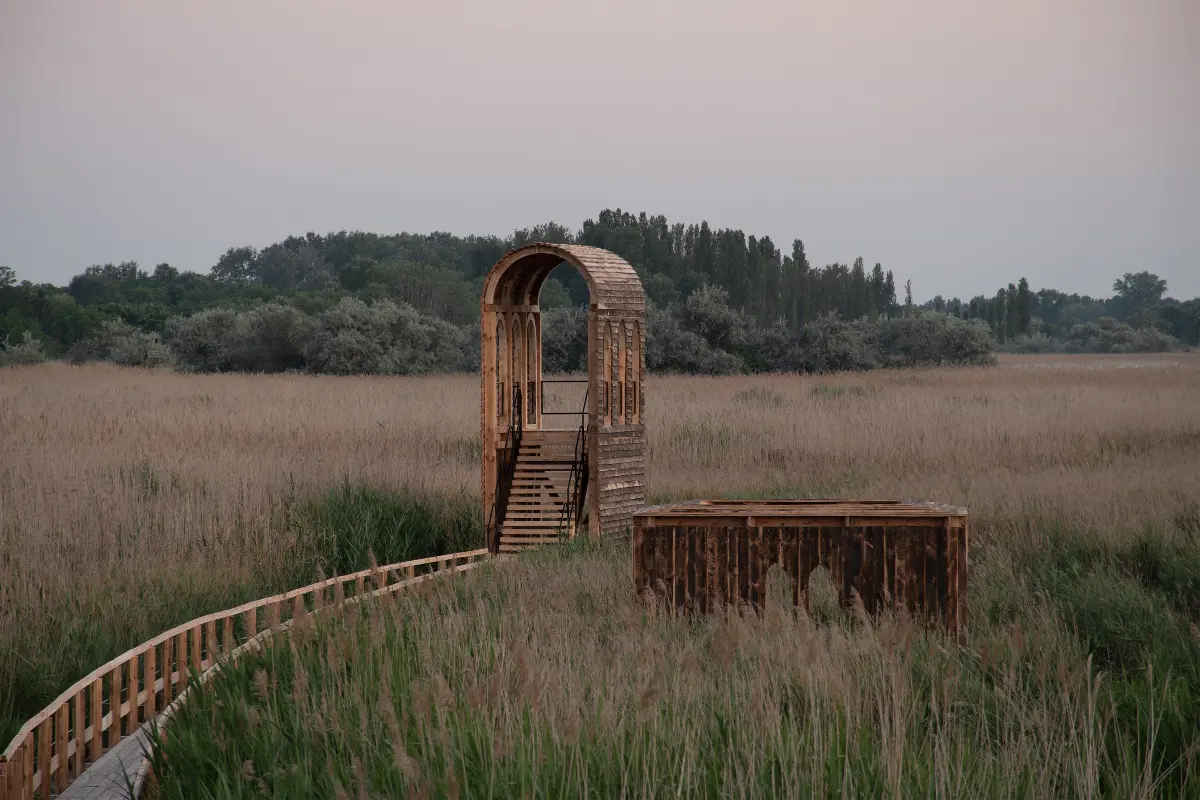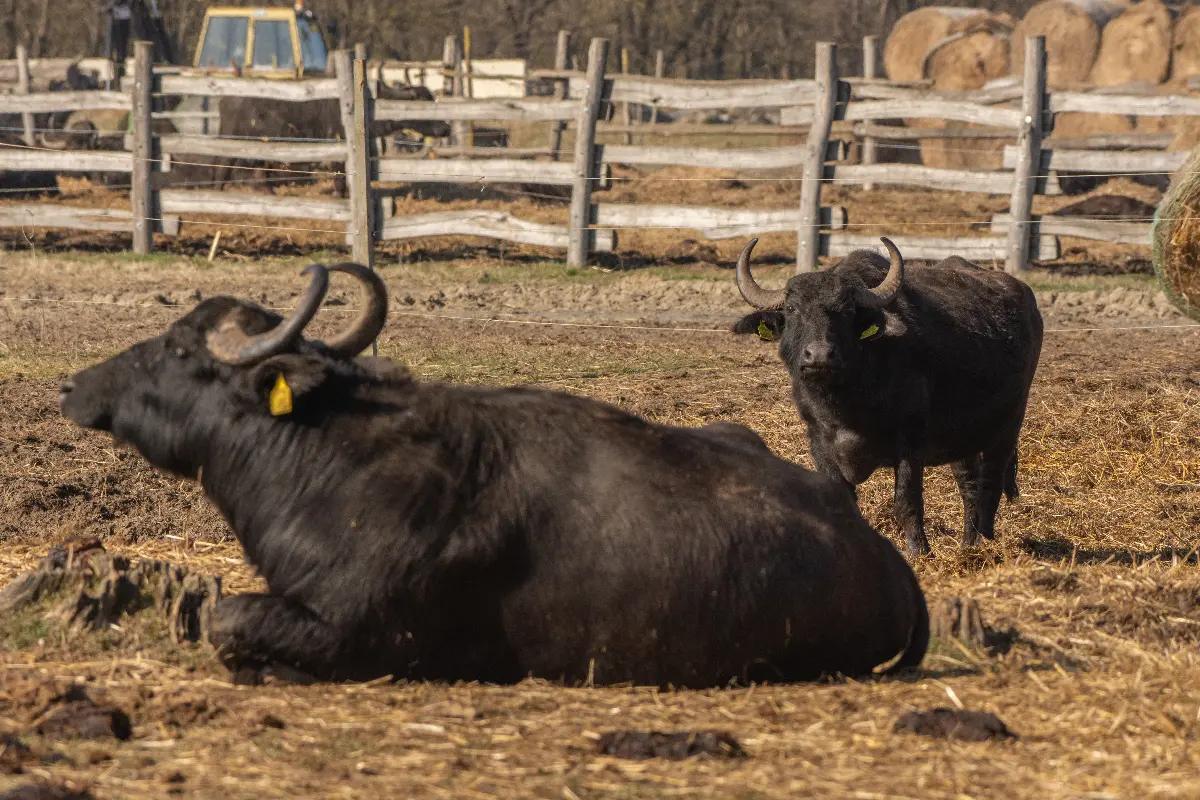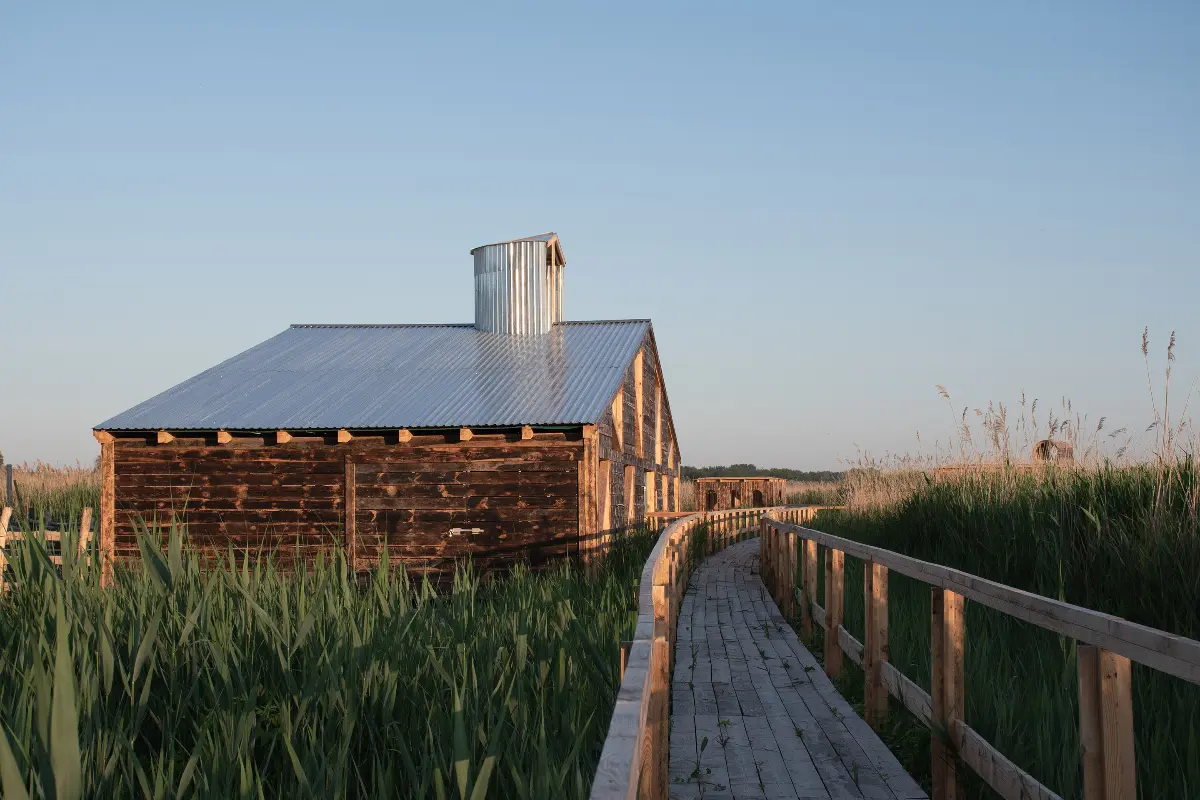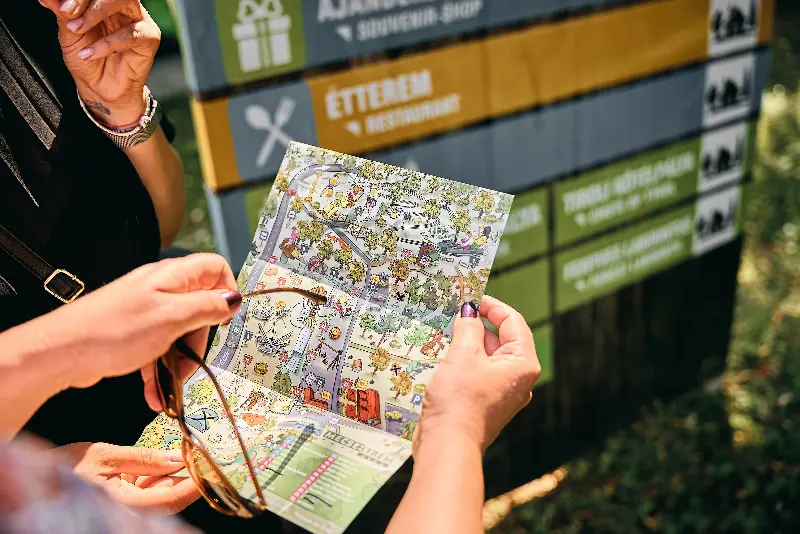
Helyszín címkék:
Landscape and architecture – a dance of geometries in the land of the buffalo
Hype&Hyper
One of these destinations is Sándorfalva, which is about 15 minutes by car and 40 minutes by bike from the centre of Szeged, and as there are no hills, it is a pleasant family bike ride. The Nádastó Recreation Park in Sándorfalva offers a natural open water beach in the summer season, in addition to the picturesque lowland environment, a wide range of active recreational opportunities. The stakes have been raised in 2022, as they have added an eco-park to their beach activities, making it an interesting and exciting destination all year round.

Buffaloes, tranquillity, undisturbed lowland landscape
The buffalo nature trail in Sándorfalva is located next to the reed pond in a Natura 2000 protected area. The main focus of the project is the recultivation of the marshy area, i.e. the reduction of invasive reeds with the help of buffaloes, with the aim of restoring the reedbedded area to a rich birdlife and habitat for around 2800 species in several stages. The 1-tonne giants are absolute partners in this, as they not only like to wallow in the marsh all day, but also eat Seaside Bulrush, reeds and other marsh grasses, and can easily survive the cold lowland winters. Domestic water buffaloes were once a natural part of this landscape: these animals were present in Hungary from the Middle Ages and served well around the household until the Second World War.
The artists of the Ecology Theatre are the inhabitants of the Mákszem Bivalyoskert Poppy Eye Buffalo Garden, as their summer pasture is the reedbed of the marshy area, where they enjoy their favourite pastime, mud bathing, and thus cool themselves down.
It is important to note that this is not a petting zoo or a buffalo reserve, where animals are curious along the trail when we visit. Here you can really catch them in their natural habitat.

The buffaloes inhabit the swamp during the summer migration season. Gábor Tóth, the owner of the buffalo herd, follows the traditional herding tradition of driving the animals in at the end of October, usually on the 29th, and the summer drive-out on St. George’s Day, 24 April. If you are keen to get up close and personal with a one-tonne animal, it is worth following the buffalo garden’s social media platform, because in addition to regularly posting pictures and videos of everyday buffalo husbandry, they also post about their pre-summer outing activities. At these events, you can actually pet a buffalo, see herding and even try your hand at crawling. The buffalo garden is not open to the public outside of the organized programmes, although in the summer it is worth visiting the animals from the nature trail.
Silent tourism: contemplation close to nature and built geometry
The trail starts from the car park and leads straight into the reeds. As we walk along the path, or the boardwalk, the human noise is constantly diminishing and time almost ceases to exist. In mid-summer, the reeds grow to about man’s height, and above them on the horizon you can see a green montage of forest trees. At sunset, it is a truly magical experience to be enveloped in nature’s green cloak, the world hermetically sealed, the man-made noise disappearing and the breeze gently caressing the reeds. Below your feet is the swamp, which in places is only knee-deep, but in some places you could sink into it. As you move inwards along the curved boardwalk, the five structures associated with the trail gradually appear.

The design studio Paradigma Ariadne took the typical landscapes of the Great Plain as a model for the visual design of the trail: not only the traditional, centuries-old buildings associated with livestock farming, such as uncovered and covered pens, but also the characteristic rustic atmosphere of 20th century large-scale farming, which have become an integral part of the landscape. These intuitions not only influenced the appearance of the trail, but also the structural solutions: reflections on the “material scarcity aesthetics” of vernacular buildings were decisive in the final design of the huts. The simple geometric openings on the wooden surfaces are reminiscent of the decorative carvings on the wooden gable-roofed houses also typical of the area. During your visit, you will experience the absolute power of nature, silence and a contemporary, exciting built environment that blends respectfully into the landscape, while being part of the reedbeds as they evolve and the flora and fauna build and work.










